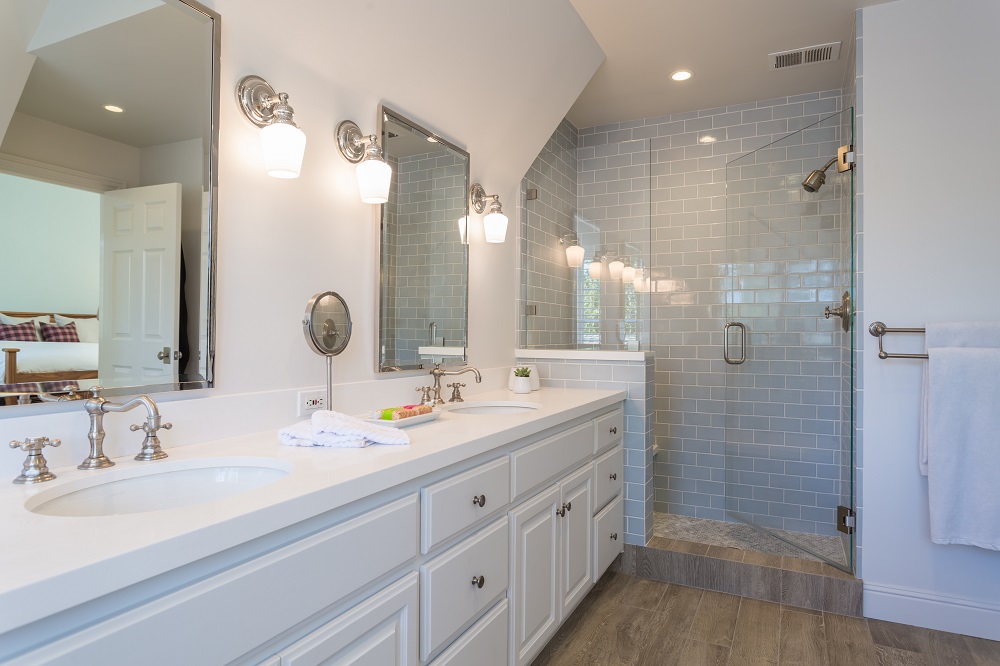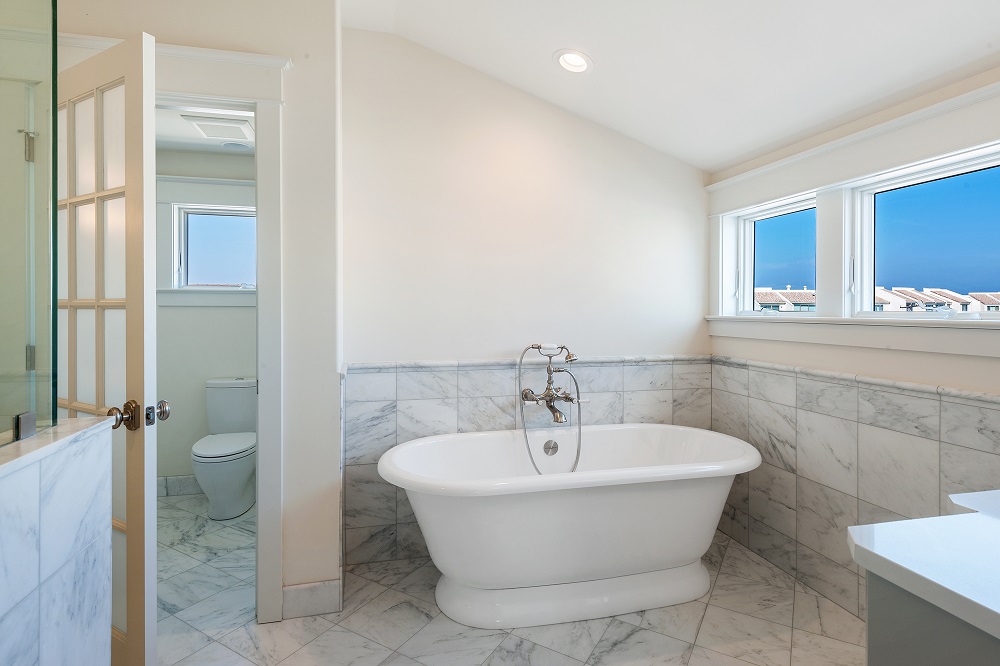Smart and Sustainable In-Home Technology to Reduce Utility Costs
The financial and environmental costs of using utilities add up fast. In many cases – and we’re all guilty of this – we don’t realize how much we’re consuming until the utility bill shows up. We scratch our heads and think, “wow, there’s no way I used 897 kilowatt-hours of electricity this month.” (The average U.S. household uses that much each month and 10,766 kWh per year.)
Fortunately, there are several in-home tech products that will save you money on your utility bills and help the environment at the same time.
How Much Electricity Do You Use Around the House?

Each month, your utility bill is calculated based on how many kilowatt-hours are consumed.
So just how far does one kilowatt-hour go?
A kilowatt-hour, which is a measure of electrical energy equivalent to a power consumption of 1,000 watts for one hour, could power ten incandescent 100-watt lightbulbs for an hour. One kwh costs about $0.12 (so leaving the lights on, despite what your mother said about turning them off to save money, isn’t as expensive as it seems). Check out this table, which lists common household appliances and how much energy they use in an average month:
Appliance average kWh per hour used each month and average cost
| Appliance | Appliance Average kWh per hour used each month | Average cost each month |
| Smartphone | .08 kWh | $0.01 |
| Tablet | .9 kWh | $0.11 |
| One LED Lightbulb | 1.2 kWh | $0.14 |
| Big-screen TV | 2.5 kWh | $0.30 |
| Wireless modem and router | 7.5 kWh | $0.90 |
| Gaming System | 8.3 kWh | $1.00 |
| One 60-watt Incandescent Lightbulb | 18.3 kWh | $2.20 |
| Desktop Computer | 25.0 kWh | $3.00 |
| Refrigerator | 29.1 kWh | $3.50 |
| Washer and Dryer | 69.44 kWh | $8.33 |
| Water Heater | 416.7 kWh | $50.00 |
| Heating and cooling | 640.5 kWh | $76.86 |
So does that mean you have to put on a sweater or take a cold shower? Not necessarily. If you know what you’re doing, you can save hundreds of kWh each month by utilizing the latest in-home technology.
Heating and Cooling
- Smart Thermostat: To save cash on heating and cooling, no matter what climate you live in, consider investing in a smart thermostat, such as a Nest. Most are compatible with Google Home, Echo and other in-house automated assistants, and they work by keeping temperature settings consistent. Some have sensors to keep tabs on hot and cold spots in your house, and you can program them to manage the temperatures when you’re at work, on vacation or asleep, so you’re not wasting energy on climate control you don’t need.
- Motorized Shades: Many motorized shades today allow you to set specific times when they should open or close. This is usually done from an app on your phone regardless of if you are home or not. You will end up saving money by keeping the sun out when it’s hot in the day or choosing to let the light warm up your space. You can also opt for honeycomb shades, which are designed especially for insulation, but any shade or drape with the right spacing will help slash your heating costs.
Average Savings: Between $131 and $145 per year

Light Use
- Smart Lights: Smart lights, like Philips Hue and LIFX, can save you cash through programming, motion detection and remote access to your lights when you’re away from home (so you’ll never have to leave the lights on for two weeks straight while you’re visiting your mother-in-law in Poughkeepsie), but that’s not all there is to it. Smart lights are LEDs, which cost less to operate; running an LED costs only a few pennies, while old incandescent lights cost about 11 times more.
Average Savings: Between $80 and $120 per year
Games, TVs and Other Appliances
- Surge Protectors: Video game consoles and some other appliances use energy even when nobody’s using them, so a conservation-themed surge protector, like the Belkin Conserve Switch Surge Protector, lets you switch things off with a remote. Other types, like ThinkEco, cut down consumption when your plugged-in devices are in standby mode.
Average Savings: Between $60 and $80 per year
Laundry
- Energy-efficient washers: Although energy-efficient washers are pretty much all you’ll find when you shop, know that certified ENERGY STAR products can help you save cash and water, so you get even more bang for your buck if you pay a water bill. If you wash your clothes in warm (not hot) or cold water, you’ll save even more. Typically, an ENERGY STAR washing machine uses 25 percent less electricity than its non-eco-friendly counterparts do.
Average Savings: Between $75 and $125 per year

How Much Water Does Your Household Use?
While estimates vary based on location, the average U.S. household uses about 90 gallons of water every day. Most of that water goes right down the toilet – literally. Toilet flushing and showers are the two biggest culprits when it comes to wasting water, and dishwashers, washing machines and outdoor watering are right behind them. Check out this chart to figure out how much water the average American household uses each year and how much it costs (tap water costs about $0.004 per gallon).
| Appliance | Average Gallons Used Each Time | Average Cost Per Use |
| Bath | 36 gallons | $0.14 |
| Shower (10 Minutes) with ordinary shower head | 50 gallons | $0.20 |
| Shower (10 Minutes) with water-saving showerhead | 20 gallons | $0.08 |
| Dishwasher (non-ENERGY STAR) | 16 gallons | $0.06 |
| Dishwasher (ENERGY STAR) | 6 gallons | $0.02 |
| Toilet Flush (Regular) | 3 gallons | $0.01 |
| Toilet Flush (low-flow) | 1.6 gallons | Less than $.01 |
| Outdoor watering (30 minutes) | 60 gallons | $0.24 |
Other than cutting down on water consumption by investing in ENERGY STAR appliances, doing fewer loads of laundry and taking shorter showers, there are a few devices you can add to your home to drastically reduce your water consumption.
Showers and Faucets
- High-efficiency faucet aerator: Installing a high-efficiency faucet aerator in your shower and on your taps can cut your water consumption in half. Because they add air, you won’t suffer a loss in pressure.
- Smart home water meter: You can also opt for a smart home water meter, which shows you how you’re using water around the house, as well as how much you’re using. You’ll be able to keep tabs on how much goes to laundry, lawn irrigation and other applications in your home, and you can create a “signature” for each appliance to get a better understanding of where you can cut back and prevent your budget from drying up.
Average Savings: About $100 per year

Toilets
- Smart toilets: First, they can help you save water, and second, they can eliminate toilet paper waste – so that means you’re helping the environment in two ways. The EPA states that toilets labeled with WaterSense labels can reduce water usage by 20-60% and save around 13,000 gallons of water per year.
Average Savings: About $100 per year
Smart Home Security
- Smart Home Security System: Having a smart home security system in place can save you money on homeowners insurance. Think of it like having airbags in the car – your insurer knows that you’re taking measures to mitigate risk, which means your rates are likely to go down. The latest-and-greatest security systems monitor your home’s electricity and wiring, and record activity that goes on inside and outside your house. Sometimes you can even get a claims-free credit, which offers you a discount if you haven’t made a claim in the past.
Average Savings: Up to 20% of your normal bill

What Smart Tech Do You Depend On?
Utility bills can get expensive, so savvy homeowners are using all kinds of smart tech to save cash, while also helping the environment. We’d love to hear about the technology you can’t live without, so share your story in the comments!
The post Smart and Sustainable In-Home Technology to Reduce Utility Costs appeared first on Redfin Real-Time.



